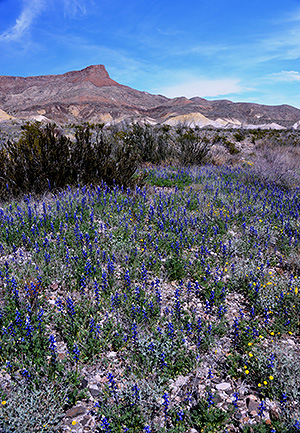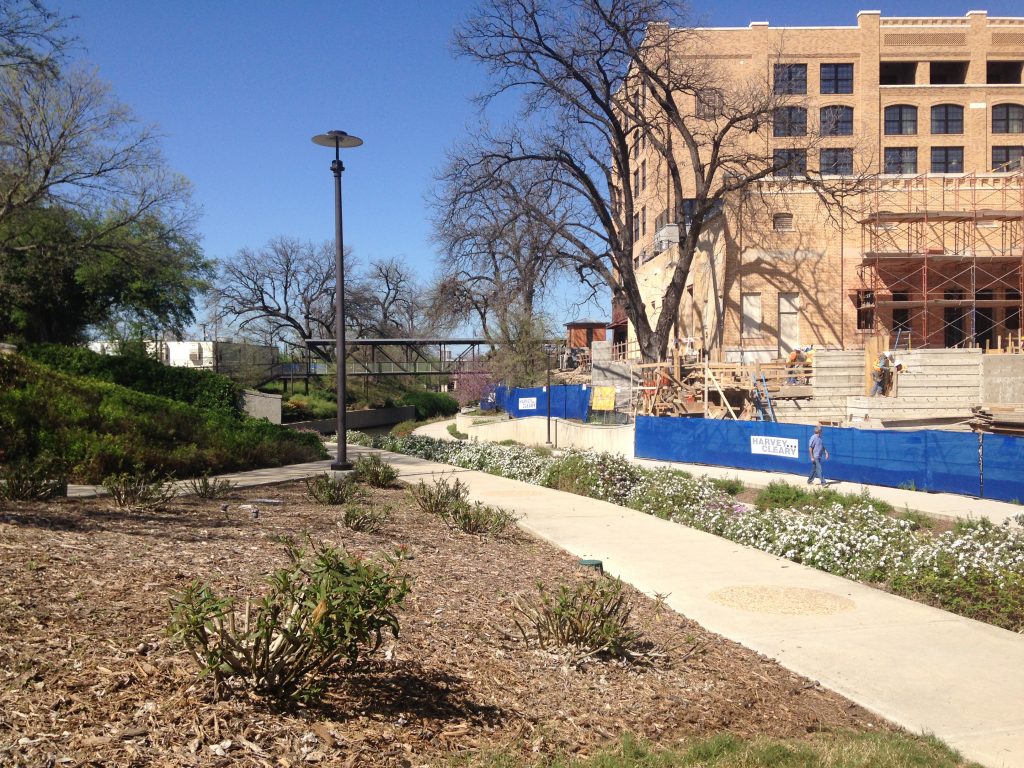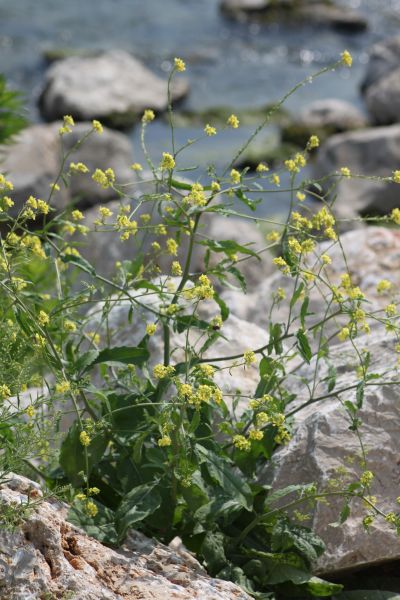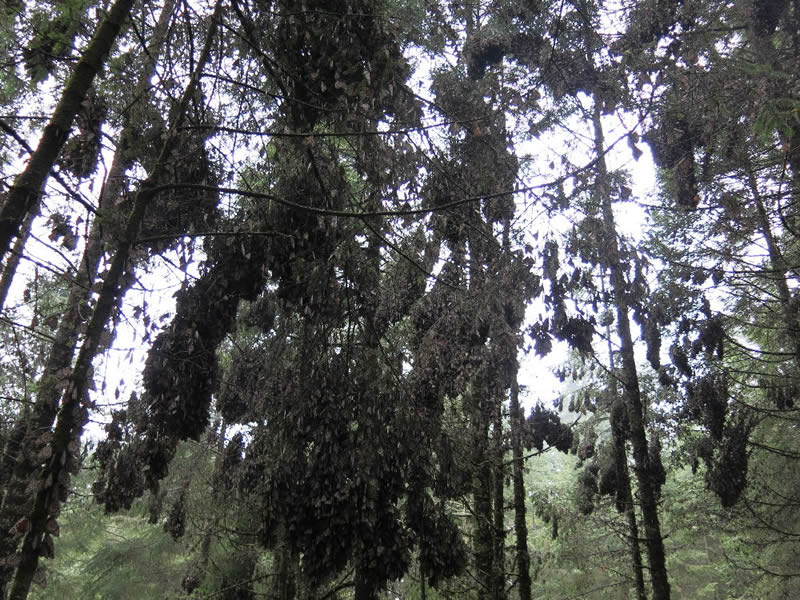A banner wildflower season will greet Monarch butterflies when they begin their migratory trek north later this month. The slow soak of winter has set the stage for a late-but-great bloom season. According to Journey North, a citizen scientist organization which tracks the migrating insects, roosting Monarchs are unlikely to leave their roosts in the forests of Michoacán until March 29, about two weeks behind schedule.
That’s probably a good thing, since the Monarchs’ host plant, milkweed, is JUST beginning to sprout in Texas. Texas is the Monarchs’ first stop on their multi-generation, Pan-American migratory journey north and typically the first generation in the butterflies’ spring migration is born in the Lone Star State.
The Ladybird Johnson Wildflower Center released its annual wildflower forecast last week, predicting a delayed start to a “stunning” season.

Won’t be long and bluebonnet stands like this one in Big Bend will dot the Texas Hill Country. Give it two weeks. Photo via Ladybird Johnson Wildfower Center
“It’s going to be good,” said horticulturist Andrea DeLong-Amaya, Senior Program Coordinator for the Center. DeLong-Amaya cited well-paced rains that benefit all wildflowers, especially annuals with shallow roots. Some plants will be “a teeny bit late, others right on time,” she said, adding “as soon we get some warm days with full sun, we’ll be cooking with gas.”
On a recent bike ride on San Antonio’s Mission Reach, bluebonnet rosettes were abundant but not quite showing. “At this point there are no large patches,” said Lee Marlowe, sustainable landscape superintendent at San Antonio River Authority (SARA), which manages the linear park. “We’re seeing some good bluebonnet stands that should be really nice, probably in April,” she said.
Over at the San Antonio Botanical Garden (SABOT), horticulturist Amanda Wielgosh also predicted a great wildflower season. She credited ideal precipitation and cool temps as reasons. “We’re already seeing a nice display of wildflowers here at the garden,” she said.
“It’s looking absolutely spectacular,” out in Bandera County outside San Antonio, said botanist and horticulturist Charles Bartlett, president of Greenhaven Industries, a San Antonio landscaping company. Bartlett visited his ranch in Bandera County last week and reported fields of three-five acres of Indian paintbrush with grand stands of bluebonnets in the bud stage. He also mentioned that the Texas buckeyes in Medina County are gorgeous, but that milkweed is taking its time.
Both DeLong-Amaya and Marlowe reported that milkweed is not quite ready and a weekend HIll Country outing to the Llano River confirmed the laid-back growth pace of the Monarch’s host plant.

Monarch butterfly, recently hatched, readies for flight on mulch at the Museum Reach Milkweed patch. Photo by Monika Maeckle
“It’s still pretty early for milkweeds to come out–they don’t have a rosette in the spring like others, they just come up,” DeLong-Amaya said. At Cibolo Nature Center in Boerne, Ben Eldredge reported that no milkweeds were up yet, but plenty of nectar plants are available. Bartlett cited four-inch tall Antelope Horns, a Texas native milkweed found out in the campo, but mentioned it was just beginning to bud. The more refined atmosphere of the SABOT coaxed milkweeds to show early. SABOT’s Wielgosh said “a plethora of milkweed” will be ready for Monarchs when they arrive later this month.

Trimmed Tropical milkweed at the Milkweed Patch on the San Antonio River Museum Reach. Not much flying–yet. Nice lantanas there on the sidewalk.Photo by Monika Maeckle
At the Milkweed Patch at San Antonio’s Museum Reach, a favorite gathering spot for Monarchs and other butterflies, the Tropical Milkweed stand got a trim this winter and has not fully recovered. Marlowe said the plant, while technically not native but a preferred host plant to Monarchs and other milkweed feeders, was cut back in February to stimulate healthy growth. A recent visit there found a freshly hatched local Monarch resting in the mulch getting ready for her first flight.

Damn you, bastard cabbage! This invader displaces wildflowers and other native vegetation. Photo courtesy SARA
One plant that’s pervasive but unwelcome is the ubiquitous “bastard cabbage.” You’ll see this yellow blooming member of the mustard family all over Central Texas and in select spots along the river. According to Dr. Kelly Lyons, a native grass and invasive species expert who teaches plant ecology at Trinity University, our warmer winters make plants like bastard cabbage flourish. “As our climate gets more Mediterranean, we’ll see more of it,” she said.
Marlowe said she would even look the other way if someone yanked it out when strolling the river. Managing bastard cabbage continues to vex SARA’s landscape managers.
While the yellow blooms are attractive enough, don’t be fooled. This extremely aggressive invader can grow five feet tall and will take over and displace native vegetation.
As the sun comes out we’ll be in for the Big Bloom of 2015. In the meantime, keep in mind that Texas is still in a drought. Summer will be here soon enough, so enjoy the mild weather–and the wildflowers–while you can.
Related posts:
- Marine Biologist Launches App to Track Monarchs on Oil Rigs
- Google Earth Tour: Monarch Butterfly Migration
- Texas Parks and Wildlife Launches Milkweed Monitoring Project
- Pollinator PowWow Draws 100s from Texas and Beyong
- Mega-Grower Colorspot to Consider Growing Chemical Free Milkweed
- Q&A with Dr. Lincoln Brower
- Survey: Monarch Butterfly Enthusiasts will Pay More for Clean, Native Milkweeds
- MIlkweed Guide for Central and South Texas
- Endangered Species Act Wrong Tool for the Job of Monarch Butterfly Conservation?
- How to Get Native Milkweed Seeds to Germinate
- Monsanto: Absolutely committed to Monarch Butterfly Conservation
- How to Raise Monarch Butterflies at Home, Part One
Like what you’re reading? Follow butterfly and native plant news at the Texas Butterfly Ranch. Sign up for email delivery, like us on Facebook, or follow us on Twitter, @monikam.


Is there a list of flowers to plant for a butterfly garden that are xeriscape?
Today Journey North reported a mass lift-off of monarchs from the overwintering sites in Mexico!
I really enjoy getting these posts. Thank you! I’m in San Diego, and my milkweed seedlings are two inches tall. The plants I cut way down in winter are just starting to bloom. I whisper to them “grow, grow, grow, so you’re ready for the little darling when they get here.” 🙂
I have five nice big tropical milkweed blooming in pots on my patio. I protected them all winter, bring on the Monarchs!